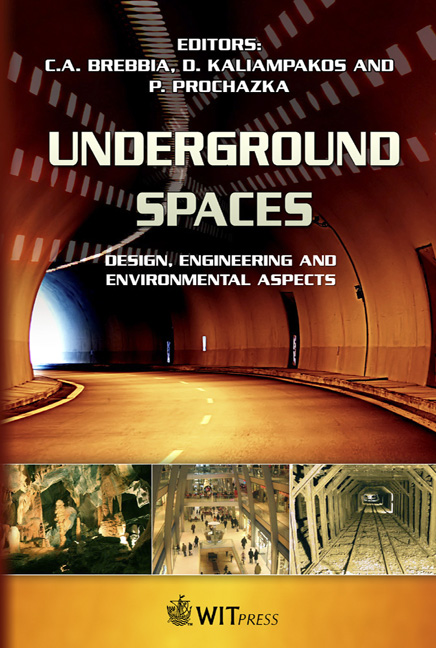Rock Burst Mechanics As A Time Dependent Event
Price
Free (open access)
Transaction
Volume
102
Pages
10
Page Range
159 - 168
Published
2008
Size
5,306 kb
Paper DOI
10.2495/US080171
Copyright
WIT Press
Author(s)
J. Vacek & S. Hrachová-Sedláčková
Abstract
This paper deals with the behaviour of open rock that occurs, for example, during long wall mining in coal mines, in deep tunnel, or shaft excavation. Long wall instability leads to extrusion of rock mass into an open space. This effect is mostly referred to as a bump, or a rock burst. For bumps to occur, the rock has to possess certain particular rock burst properties leading to accumulation of energy and the potential to release this energy. Such materials may be brittle, or the bumps may arise at the interfacial zones of two parts of the rock, which have principally different material properties. The solution is based on experimental and mathematical modelling. These two methods have to allow the problem to be studied on the basis of three presumptions: • the solution must be time dependent • the solution must allow the creation of crack in the rock mass • the solution must allow an extrusion of rock into an open space (bump effect) A part of the presentation will be bump video from mathematical and experimental tests. Keywords: rock burst, bump, mining, rock mechanics, mathematical and physical modelling. 1 Introduction The bump is the most dangerous event that can occur during excavation works. The surrounding rock is extruded into underground open space by severe force during a bump. This event may cause injury or even death to mining workers and it may be the cause of the destruction of the excavation space. This is the reason
Keywords
rock burst, bump, mining, rock mechanics, mathematical and physical modelling.





